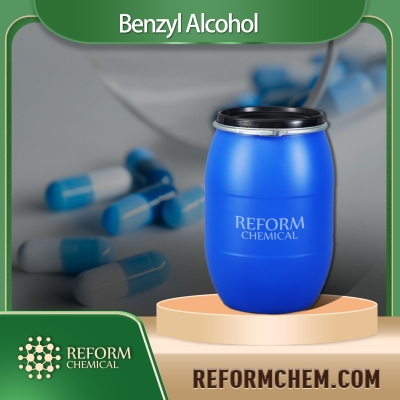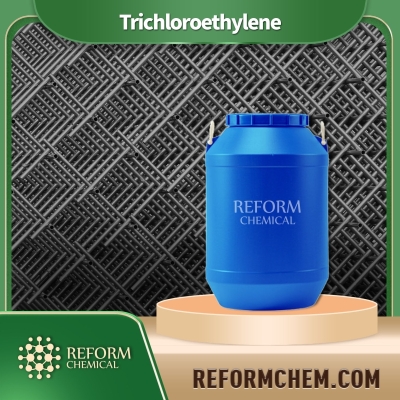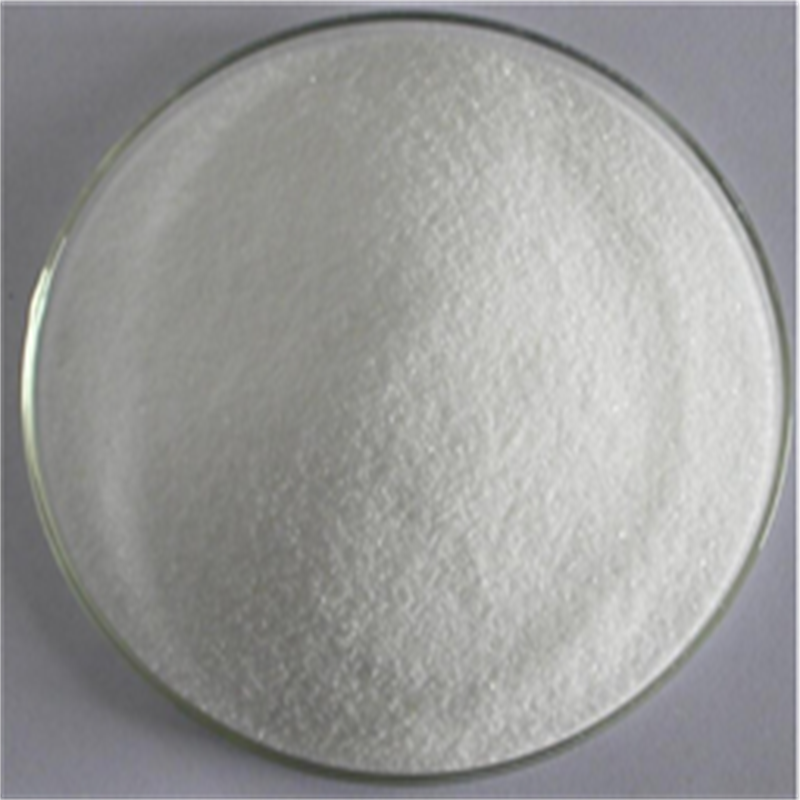-
Categories
-
Pharmaceutical Intermediates
-
Active Pharmaceutical Ingredients
-
Food Additives
- Industrial Coatings
- Agrochemicals
- Dyes and Pigments
- Surfactant
- Flavors and Fragrances
- Chemical Reagents
- Catalyst and Auxiliary
- Natural Products
- Inorganic Chemistry
-
Organic Chemistry
-
Biochemical Engineering
- Analytical Chemistry
-
Cosmetic Ingredient
- Water Treatment Chemical
-
Pharmaceutical Intermediates
Promotion
ECHEMI Mall
Wholesale
Weekly Price
Exhibition
News
-
Trade Service
Click on the blue word·Follow our children's intraoperative wheezing selected from CLINICAL PEDIATRIC ANESTHESIA A CASE-BASED HANDBOOK Editor-in-Chief Kenneth R.
Goldschneider Andrew J.
DavidsonEric P.
Wittkugel Adarm V.
Skinner Translated by Lian Qingquan Shangguan Wang Ning❖ Wheezing It is a high-pitched whistle-like sound heard when exhaling
.
Wheezes are caused by the acceleration of airflow in a narrow airway to create turbulence
.
Asthma, bronchospasm, and bronchiolitis all involve small airways, but in fact, these wheezes arise from tracheal and main bronchial stenosis secondary to expiratory compression
.
Small airway obstruction causes positive pleural pressure (normally negative) to exceed the luminal pressure in the trachea and main bronchi during forced expiration, thereby compressing these airways and causing expiratory airway stenosis
.
Although the most common cause of wheezing is small airway obstruction, obstructive lesions in the trachea or main bronchi can also increase airflow velocity and cause wheezing
.
Obstruction of the large airway by a foreign body or compression of lymph nodes can also produce pronounced wheezing
.
Stridor due to extrathoracic obstruction usually occurs during inspiration, and bronchospasm usually occurs during expiration, so that the two can be distinguished
.
"Stridor" is often used to describe a murmur on inspiration
.
Causes of Wheezing Infants, Preschool Children Causes of Preoperative Wheezing Asthma in infants and young children Large airway obstruction: Airway and vascular malformations, foreign body aspiration, mediastinal cysts/masses Large airway obstruction: Bronchial adenoma, antitrypsin deficiency, inhaled/swallowed foreign body, mediastinal tumor/mass, wheezing during hysterical episodes How to avoid intraoperative stridor poor asthma control and preoperative wheezing), elective surgery should be postponed
.
At-risk children undergoing surgery require careful anaesthesia protocols, and all asthma medications should be continued until preoperatively
.
Preoperative use of beta-agonists (eg, albuterol) can reduce the incidence of perioperative bronchospasm, and preoperative glucocorticoids should be considered in high-risk children
.
Sevoflurane inhalation induction is preferred because the volatile anesthetic is usually a bronchodilator and the mask is familiar and acceptable to the child
.
Intravenous induction can also be performed safely, bearing in mind the effect of different drugs on bronchial muscle tension
.
Propofol significantly relaxes the upper airway, while ketamine has a weak sympathomimetic effect and causes bronchiectasis, however, it has the disadvantage of increasing airway secretions
.
The maintenance of anesthesia with desflurane should be avoided, and sevoflurane may be preferred over isoflurane
.
Maintaining an adequate depth of anesthesia prior to airway manipulation is critical, as endotracheal intubation is less likely to cause respiratory events, but more likely to cause bronchospasm than a laryngeal mask
.
Tracheal extubation under deep anesthesia is usually recommended
.
Children with airway hyperresponsiveness are prone to laryngospasm and bronchospasm
.
Some drugs routinely used in anesthesia cause bronchospasm by releasing histamine or increasing muscarinic activity by causing allergic reactions
.
Atracurium has a histamine release effect, whereas cisatracurium does not
.
Although succinylcholine is not contraindicated in patients at risk for bronchospasm, rocuronium can also be used for rapid sequential intubation
.
In all cases, attention must be paid to antagonizing the neuromuscular blocking effects of nondepolarizing muscle relaxants
.
The use of morphine in asthma patients has been controversial, however objective evidence is lacking
.
Management of intraoperative wheezing: rapid diagnosis of the cause of wheezing
.
Wheezing usually occurs when light anesthesia stimulates the bronchi or tracheal crest, but it can also be caused by a variety of mechanisms, including aspiration, allergy, or drug-related bronchospasm, and clinical data can help identify the cause
.
Mechanical causes of airway obstruction (eg, twisted endotracheal tube or mucus blockage) need to be determined by testing whether the circuit and suction tube can pass through the very end of the endotracheal tube
.
Other rare mechanical causes include foreign body aspiration (which may not be witnessed or only suspected), obstructive masses, vascular rings, and vocal cord dysfunction
.
The following three conditions indicate that an allergic reaction may occur: (1) Symptoms of sudden onset and rapid progression
.
(2) Life-threatening airway and/or circulation problems
.
(3) Skin and/or mucosal changes (flushing, urticaria, angioedema) If mechanical causes and allergic reactions have been ruled out, and the child has persistent stridor, the best management is to deepen anesthesia, through a single injection of C Poofol (1-2 mg/kg) or increasing the inhaled concentration of sevoflurane, desflurane significantly increases airway difficulty, especially in children with airway reactivity, and should be avoided
.
In this case, β2-receptor agonists can also be inhaled to treat acute bronchospasm, and short-acting drugs such as salbutamol (salbutamol) can be given through the breathing circuit, a dose equivalent to 100ug, or aerosol inhalation of 0.
5% salbutamol (5mg /ml), can be diluted (0.
5ml diluted to 4ml) or undiluted
.
Other beta2 agonists include terbutaline and oxinaline
.
For life-threatening bronchospasm, a single IV epinephrine 1–2 μgkg (1/10 resuscitation dose) or an IV β2-agonist should be administered
.
Systemic corticosteroids can be used in more severe cases, they have a slower onset than beta2-agonists, and intravenous methylprednisolone 0.
5-1 mg/kg or hydrocortisone 2-4 mg/kg can be used
.
Glucocorticoids can enhance and prolong the body's response to β2 adrenergic receptor agonists within 1 hour, while their anti-inflammatory effects take 4 to 6 hours to take effect
.
Lidocaine (linocaine) (1.
5 mg/kg IV) reduces the airway response to device- and drug-induced bronchospasm
.
Paradoxically, however, nebulized or intravenous lidocaine can also cause marked increases in airway tone and airway narrowing, and magnesium can also be used for severe asthma attacks
.
Aminophylline is not recommended for the treatment of asthma under anesthesia because it may cause cardiac arrhythmias
.
Children with wheezing should be closely observed in the recovery room for increased work of breathing, respiratory distress, and changes in oxygen demand
.
Children with preexisting reactive airway disease may develop stridor under anesthesia
.
Volatile anesthetics are good bronchodilators and can reduce this from happening
.
It should be remembered that nonsteroidal anti-inflammatory drugs (NSAIDs) may induce asthma, although this phenomenon is more common in adults
.
Persistent oxygen dependence suggests that arterial blood gas testing may be required
.
Chest radiographs of airway hyperresponsive disease are generally normal; however, typical findings include increased peripheral bronchial density, subsegmental atelectasis and hyperdistention, rare causes of wheezing include congenital pulmonary malformations, vascular malformations
.
If symptoms are not relieved, you may need to consult a respiratory physician (children's respiratory department)
.
Porter: Wu Yajun Layout: Rou Rou WeChat public account Luffy Medical Channel
Goldschneider Andrew J.
DavidsonEric P.
Wittkugel Adarm V.
Skinner Translated by Lian Qingquan Shangguan Wang Ning❖ Wheezing It is a high-pitched whistle-like sound heard when exhaling
.
Wheezes are caused by the acceleration of airflow in a narrow airway to create turbulence
.
Asthma, bronchospasm, and bronchiolitis all involve small airways, but in fact, these wheezes arise from tracheal and main bronchial stenosis secondary to expiratory compression
.
Small airway obstruction causes positive pleural pressure (normally negative) to exceed the luminal pressure in the trachea and main bronchi during forced expiration, thereby compressing these airways and causing expiratory airway stenosis
.
Although the most common cause of wheezing is small airway obstruction, obstructive lesions in the trachea or main bronchi can also increase airflow velocity and cause wheezing
.
Obstruction of the large airway by a foreign body or compression of lymph nodes can also produce pronounced wheezing
.
Stridor due to extrathoracic obstruction usually occurs during inspiration, and bronchospasm usually occurs during expiration, so that the two can be distinguished
.
"Stridor" is often used to describe a murmur on inspiration
.
Causes of Wheezing Infants, Preschool Children Causes of Preoperative Wheezing Asthma in infants and young children Large airway obstruction: Airway and vascular malformations, foreign body aspiration, mediastinal cysts/masses Large airway obstruction: Bronchial adenoma, antitrypsin deficiency, inhaled/swallowed foreign body, mediastinal tumor/mass, wheezing during hysterical episodes How to avoid intraoperative stridor poor asthma control and preoperative wheezing), elective surgery should be postponed
.
At-risk children undergoing surgery require careful anaesthesia protocols, and all asthma medications should be continued until preoperatively
.
Preoperative use of beta-agonists (eg, albuterol) can reduce the incidence of perioperative bronchospasm, and preoperative glucocorticoids should be considered in high-risk children
.
Sevoflurane inhalation induction is preferred because the volatile anesthetic is usually a bronchodilator and the mask is familiar and acceptable to the child
.
Intravenous induction can also be performed safely, bearing in mind the effect of different drugs on bronchial muscle tension
.
Propofol significantly relaxes the upper airway, while ketamine has a weak sympathomimetic effect and causes bronchiectasis, however, it has the disadvantage of increasing airway secretions
.
The maintenance of anesthesia with desflurane should be avoided, and sevoflurane may be preferred over isoflurane
.
Maintaining an adequate depth of anesthesia prior to airway manipulation is critical, as endotracheal intubation is less likely to cause respiratory events, but more likely to cause bronchospasm than a laryngeal mask
.
Tracheal extubation under deep anesthesia is usually recommended
.
Children with airway hyperresponsiveness are prone to laryngospasm and bronchospasm
.
Some drugs routinely used in anesthesia cause bronchospasm by releasing histamine or increasing muscarinic activity by causing allergic reactions
.
Atracurium has a histamine release effect, whereas cisatracurium does not
.
Although succinylcholine is not contraindicated in patients at risk for bronchospasm, rocuronium can also be used for rapid sequential intubation
.
In all cases, attention must be paid to antagonizing the neuromuscular blocking effects of nondepolarizing muscle relaxants
.
The use of morphine in asthma patients has been controversial, however objective evidence is lacking
.
Management of intraoperative wheezing: rapid diagnosis of the cause of wheezing
.
Wheezing usually occurs when light anesthesia stimulates the bronchi or tracheal crest, but it can also be caused by a variety of mechanisms, including aspiration, allergy, or drug-related bronchospasm, and clinical data can help identify the cause
.
Mechanical causes of airway obstruction (eg, twisted endotracheal tube or mucus blockage) need to be determined by testing whether the circuit and suction tube can pass through the very end of the endotracheal tube
.
Other rare mechanical causes include foreign body aspiration (which may not be witnessed or only suspected), obstructive masses, vascular rings, and vocal cord dysfunction
.
The following three conditions indicate that an allergic reaction may occur: (1) Symptoms of sudden onset and rapid progression
.
(2) Life-threatening airway and/or circulation problems
.
(3) Skin and/or mucosal changes (flushing, urticaria, angioedema) If mechanical causes and allergic reactions have been ruled out, and the child has persistent stridor, the best management is to deepen anesthesia, through a single injection of C Poofol (1-2 mg/kg) or increasing the inhaled concentration of sevoflurane, desflurane significantly increases airway difficulty, especially in children with airway reactivity, and should be avoided
.
In this case, β2-receptor agonists can also be inhaled to treat acute bronchospasm, and short-acting drugs such as salbutamol (salbutamol) can be given through the breathing circuit, a dose equivalent to 100ug, or aerosol inhalation of 0.
5% salbutamol (5mg /ml), can be diluted (0.
5ml diluted to 4ml) or undiluted
.
Other beta2 agonists include terbutaline and oxinaline
.
For life-threatening bronchospasm, a single IV epinephrine 1–2 μgkg (1/10 resuscitation dose) or an IV β2-agonist should be administered
.
Systemic corticosteroids can be used in more severe cases, they have a slower onset than beta2-agonists, and intravenous methylprednisolone 0.
5-1 mg/kg or hydrocortisone 2-4 mg/kg can be used
.
Glucocorticoids can enhance and prolong the body's response to β2 adrenergic receptor agonists within 1 hour, while their anti-inflammatory effects take 4 to 6 hours to take effect
.
Lidocaine (linocaine) (1.
5 mg/kg IV) reduces the airway response to device- and drug-induced bronchospasm
.
Paradoxically, however, nebulized or intravenous lidocaine can also cause marked increases in airway tone and airway narrowing, and magnesium can also be used for severe asthma attacks
.
Aminophylline is not recommended for the treatment of asthma under anesthesia because it may cause cardiac arrhythmias
.
Children with wheezing should be closely observed in the recovery room for increased work of breathing, respiratory distress, and changes in oxygen demand
.
Children with preexisting reactive airway disease may develop stridor under anesthesia
.
Volatile anesthetics are good bronchodilators and can reduce this from happening
.
It should be remembered that nonsteroidal anti-inflammatory drugs (NSAIDs) may induce asthma, although this phenomenon is more common in adults
.
Persistent oxygen dependence suggests that arterial blood gas testing may be required
.
Chest radiographs of airway hyperresponsive disease are generally normal; however, typical findings include increased peripheral bronchial density, subsegmental atelectasis and hyperdistention, rare causes of wheezing include congenital pulmonary malformations, vascular malformations
.
If symptoms are not relieved, you may need to consult a respiratory physician (children's respiratory department)
.
Porter: Wu Yajun Layout: Rou Rou WeChat public account Luffy Medical Channel







